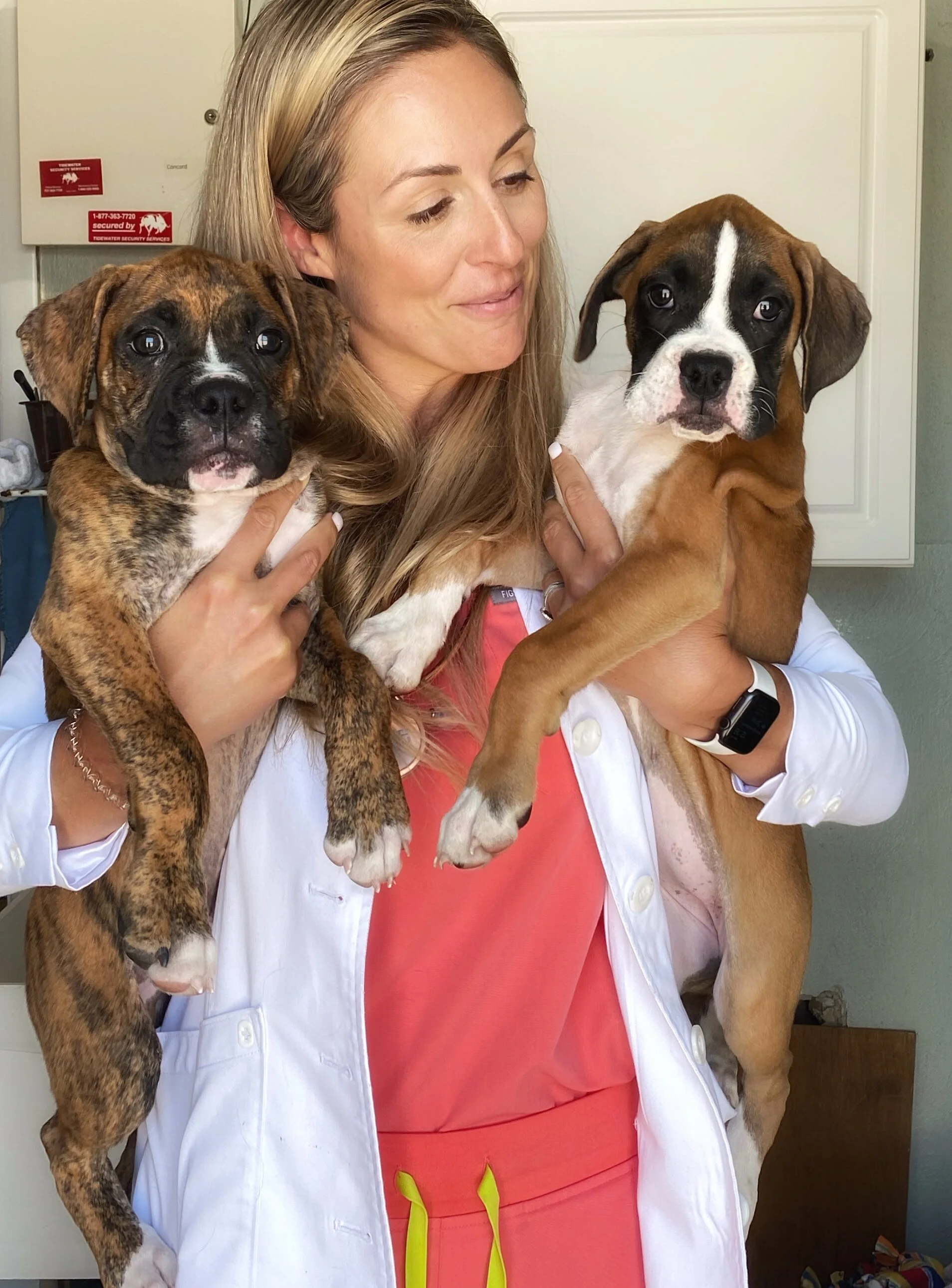Welcome to My Vet and Me™

Cats are amazing animals. They are intelligent, inquisitive, and often independent companions. With the busyness of our family schedule, there are many days that go by where I only see my cats in passing. When I think about my dogs, our relationship is very different. My dogs run with me, go to the beach with our family, and travel with us. I am more likely to notice when my dogs aren’t feeling well or when they are in pain. My cats, not so much.
Hi there! It’s been awhile since I have posted a new blog and I will say this is definitely not a typical topic, but it does need to be addressed as changes are happening in veterinary medicine not just in your city but all over the world. We all remember hearing about the puppy pandemic and how many families adopted new pets in the Spring of 2020. In addition to new pets flooding the market, women’s careers were hit hard when schools chose to begin virtual learning and did you know veterinary medicine is a female dominated profession? What I am saying is: right now there is a shortage of veterinarians and veterinary staff. I want to help you, as a pet parent, navigate through this so you aren’t the one spending 8 hours waiting to be seen at your local veterinary ER or waiting 2 weeks for your veterinarian to fill your pet’s medications. By taking some simple steps to prepare for your pet’s visit and maintaining an open and honest line of communication you will have a great experience!
September is my favorite month where I live. The tourists have gone, we have cool mornings and evenings, but still experience warm days. The beach is beautiful (and empty!) in September, yet the water still warm enough to swim. September is also the heart of hurricane season on the east coast, and as we stock away water, canned food, and other essentials for impending storms, we do not want to forget about our 4-legged family members. Here are 7 tips to help prepare you and your pet for a natural disaster.
March is a tricky month, isn’t it? In many parts of the United States people are experiencing the last snow storms Winter has to offer while others are beginning to see glimpses of Spring. As far as our pets are concerned, this is the time of year their exposure to ectoparasites (ticks, fleas, and mosquitoes) begins to really become a threat. Many pet parents choose to discontinue their monthly flea and tick prevention during the winter months as they do not feel the exposure really exists, while others continue to treat their animals every month. I want to discuss the importance of preventing ectoparasites in our animals – specifically ticks – because they pose a threat not only to the health of our pets, but also to us!
Do you consider yourself familiar with some of the common household items that are toxic to pets? Grapes and raisins (kidney failure), chocolate (vomiting, diarrhea, seizures), and anti-freeze (also causes kidney failure). But there are many more that are not really talked about so I decided to put together a list of toxins you may not be familiar with. Remember, when an animal has ingested a toxin, often the symptoms are not very specific (lethargy, vomiting, diarrhea, seizures): which means YOU as the pet owner are the key to figuring out what your cat or dog may have gotten in to. As a veterinarian, I rely on my clients to be honest and think through their day in hopes of figuring out what their pet could have eaten. Knowing which items in your home are a potential risk, is the first step at helping your veterinarian identify toxin exposure. All of these toxins I talked about are dangerous for your pets and most are lethal without treatment, so please share with friends and spread the word!
One of the best things to happen as a result of the COVID 19 pandemic has been the rise in pet adoptions across the country. Beginning in March of 2020 and into 2021, shelters continue to see a demand in adoptions and breeders talk of wait lists a mile long. I have certainly enjoyed watching clients welcome new animals into their homes but I have also realized many of the people adopting animals are completely new to pet ownership. While some have had dogs or cats previously, for many families it has been years since they’ve welcomed a new addition. Since it can be challenging to convey every piece of information during one veterinary visit, I thought I would put together some tips for welcoming a new puppy.
Last but never least, our feline friends. Cats are unique in many ways, but unfortunately, like dogs, dental disease is common in cats as well - affecting 80% of felines over age 3. In addition to periodontal disease, many conditions affect the oral health of our felines. Here are 4 of the most common:
Welcome back! In my initial post on dental disease, I talked about exactly what periodontal disease is, how to prevent it, and how it is treated. Now I am diving into more specific conditions related to oral health in our canine companions. While there are many disease affecting the mouth of dogs, below are 4 of the most common conditions.
Chances are, if your dog or cat is more than 4 years old, your veterinarian has mentioned dental disease or talked with you about dental care. February is National Pet Dental Health Month so I am coming at you this month with a 3-part series in an attempt to bring awareness to dental disease and help you to provide the best care for your fur baby.
I don’t know about you, but as soon as Labor Day is over, I find myself gathering materials for Halloween costumes, preparing Thanksgiving dinner plans, and making Christmas Lists! The fall seems to blend together, and I think it has done so this year more than any other. Whatever holidays are being celebrated, I know your pets are included. And with so many social media posts about what you cannot feed your pets, I thought I would take the opposite position and list some healthy holiday foods you can share with your furry family members!
BE IN THE KNOW











